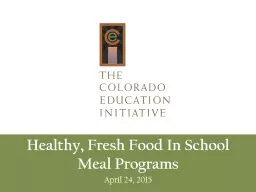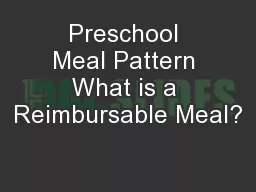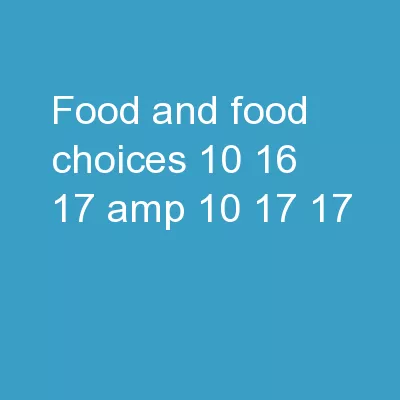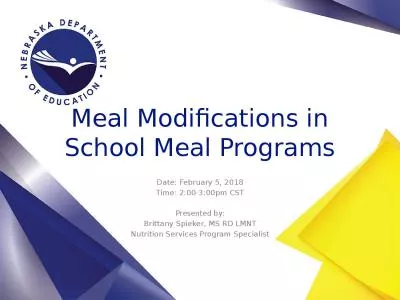PPT-Healthy, Fresh Food In School Meal Programs
Author : luanne-stotts | Published Date : 2017-07-28
April 24 2015 Rick Hughes Director Whats On The Menu Maslows Hierarchy of Needs Where does learning occur What is hungers impact Wikipedia Spring 2007 The Hunger
Presentation Embed Code
Download Presentation
Download Presentation The PPT/PDF document "Healthy, Fresh Food In School Meal Progr..." is the property of its rightful owner. Permission is granted to download and print the materials on this website for personal, non-commercial use only, and to display it on your personal computer provided you do not modify the materials and that you retain all copyright notices contained in the materials. By downloading content from our website, you accept the terms of this agreement.
Healthy, Fresh Food In School Meal Programs: Transcript
Download Rules Of Document
"Healthy, Fresh Food In School Meal Programs"The content belongs to its owner. You may download and print it for personal use, without modification, and keep all copyright notices. By downloading, you agree to these terms.
Related Documents














